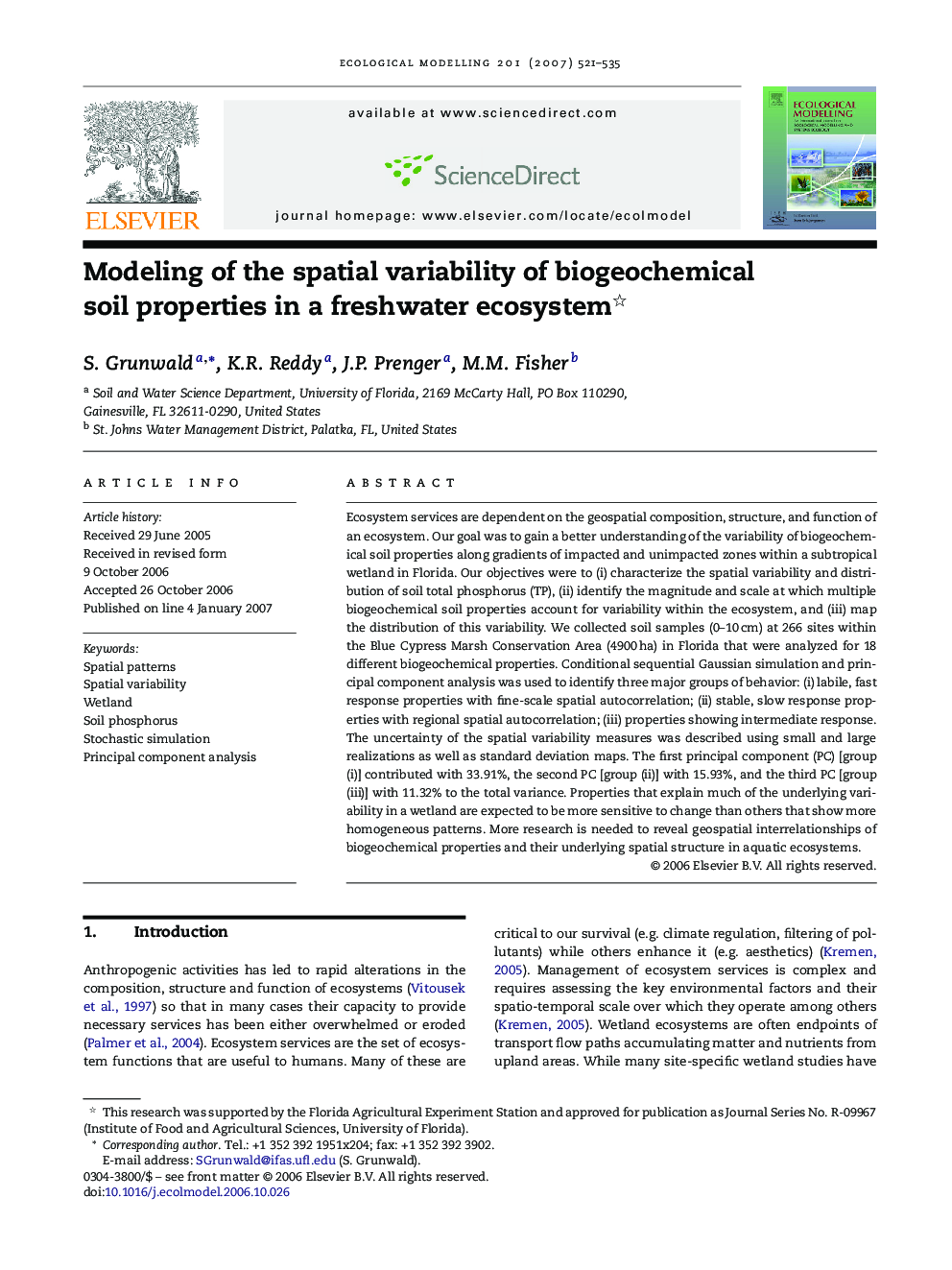| Article ID | Journal | Published Year | Pages | File Type |
|---|---|---|---|---|
| 4378505 | Ecological Modelling | 2007 | 15 Pages |
Ecosystem services are dependent on the geospatial composition, structure, and function of an ecosystem. Our goal was to gain a better understanding of the variability of biogeochemical soil properties along gradients of impacted and unimpacted zones within a subtropical wetland in Florida. Our objectives were to (i) characterize the spatial variability and distribution of soil total phosphorus (TP), (ii) identify the magnitude and scale at which multiple biogeochemical soil properties account for variability within the ecosystem, and (iii) map the distribution of this variability. We collected soil samples (0–10 cm) at 266 sites within the Blue Cypress Marsh Conservation Area (4900 ha) in Florida that were analyzed for 18 different biogeochemical properties. Conditional sequential Gaussian simulation and principal component analysis was used to identify three major groups of behavior: (i) labile, fast response properties with fine-scale spatial autocorrelation; (ii) stable, slow response properties with regional spatial autocorrelation; (iii) properties showing intermediate response. The uncertainty of the spatial variability measures was described using small and large realizations as well as standard deviation maps. The first principal component (PC) [group (i)] contributed with 33.91%, the second PC [group (ii)] with 15.93%, and the third PC [group (iii)] with 11.32% to the total variance. Properties that explain much of the underlying variability in a wetland are expected to be more sensitive to change than others that show more homogeneous patterns. More research is needed to reveal geospatial interrelationships of biogeochemical properties and their underlying spatial structure in aquatic ecosystems.
